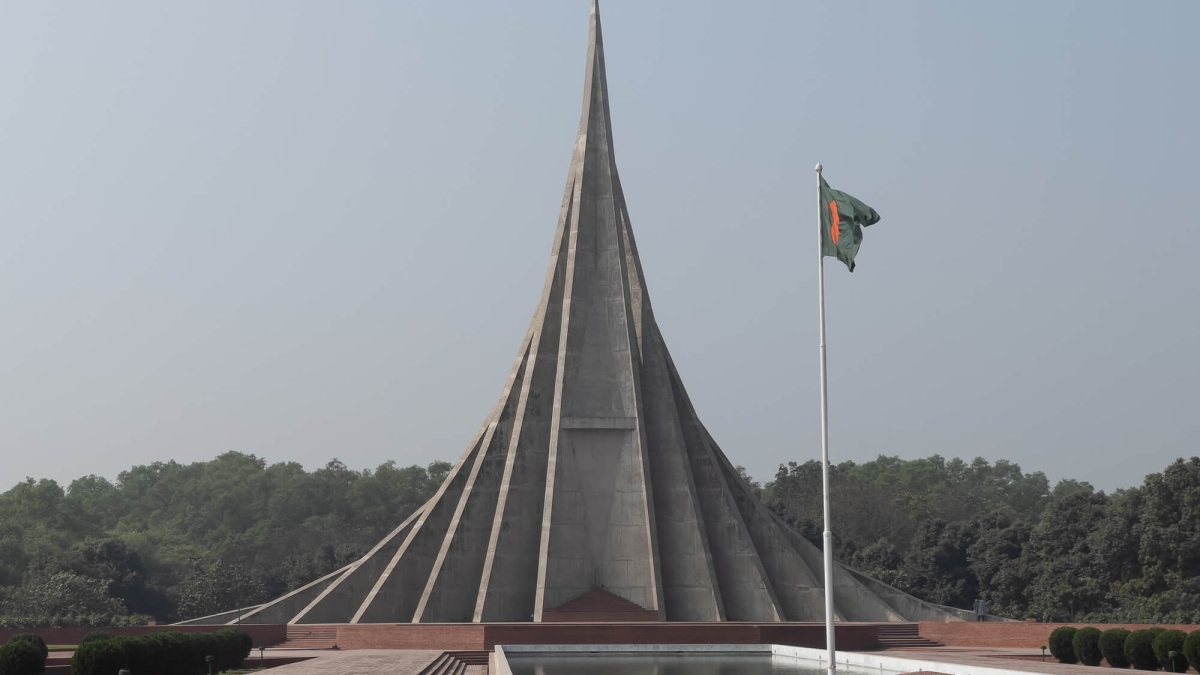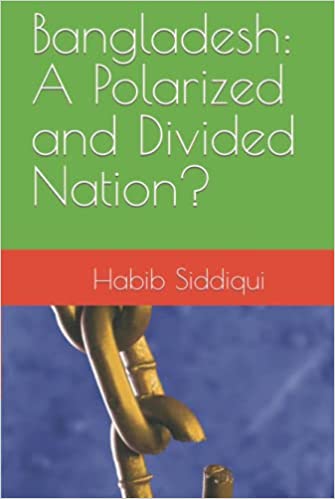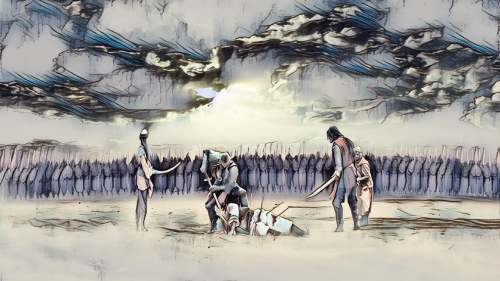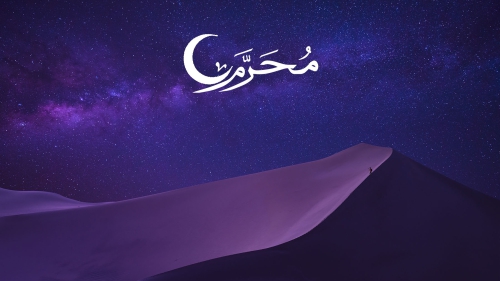The ‘Other’ Victims of the Liberation War of Bangladesh

Bijoy Dibosh or the Victory Day is celebrated as a national holiday in Bangladesh on 16 December to commemorate the surrender of the Pakistani forces in Dhaka to the allied forces of Bangladesh and India. The nine-month-long Bangladesh Liberation War witnessed death of many individuals on all the sides – for and against the liberation of Bangladesh. As is often the case, most victims were innocent unarmed civilians.
Extant research works show that the Urdu-speaking non-Bengalis faced genocidal crimes at the hands of Bengali vigilantes before, during and after the liberation war of 1971. As religious minorities fleeing persecution in Hindu-majority India, they settled in East Pakistan and remained loyalists to the very end of what was once “united” Pakistan.
During 1947-48 nearly 96% of the fleeing Muslim refugees from the Indian administered states of West Bengal, Bihar and Assam settled in East Pakistan; the remainder 4% settled in West Pakistan, especially in Karachi, then the capital city of Pakistan. The Bihari Muslim migration to East Bengal (later to become East Pakistan) started earlier. The pre-partition anti-Muslim pogroms in 1946 witnessed the slaughter of more than 30,000 Bihari Muslims in the hands of communalistic Hindus. Sheikh Mujibur Rahman, then a student leader, accompanied Husain Shahid Suhrawardy, the then chief minister of (undivided) Bengal in British-run India, to visit Bihar and distributed relief goods amongst the affected victims’ families.
The journalist S.M. Hali reported that in the aftermath of the 1946 riot in Bihar, the founder of Pakistan Muhammad Ali Jinnah said, “I never dreamt that in my lifetime, I shall see Pakistan in being, but the tragedy of Bihar has brought it about.”
Sheikh Mujib (later to be honored as Bangabandhu) assured the victims that the doors of East Bengal (soon to become the eastern wing of Pakistan) would be open for the Bihari community. Nearly 30,000 Bihari Muslims took shelter in East Bengal between October 30 and November 7 of that year. By July 1947, 90% of the Muslim employees of the central government, working in the state of Bihar, expressed their desire to leave for Pakistan. This include all the Indian Civil Service (ICS) officers serving in Bihar, almost all postal and military accounts functionaries, and about 2,000 telegraphists and ticket collectors in the East India Railway’s Dinajpur division, and the majority of the drivers and fitters (Partha S. Ghosh, “Migrants, Refugees and the Stateless in South Asia”. Sage Publication India Pvt Ltd., New Delhi (2016)).
According to the 1951 census, 671,000 Bihari refugees were in East Bengal; by 1961, the refugee population had reached 850,000. Broad estimates suggest that about 1.5 million Muslims migrated from West Bengal and Bihar to East Bengal in the two decades after partition. The migrants were mostly educated and hardworking; they were easily absorbed in the fields of education, medicine, railways, police, armed forces, and other important cadres.
Those Muslim refugees soon found out in their adopted land – be in Karachi or in East Pakistan – that the linguistic identity was more important than the religious one.
The first fissures between the two communities in East Pakistan appeared as early as 1948 because of the language movement. Towards defining a national identity, the Federal Government of Pakistan declared Urdu as the sole national language, sparking extensive protests among the Bengali-speaking majority of East Bengal. Since the Biharis, whose mother tongue was Urdu, did not join in the Bengali language movement, the Bengalis perceived the Biharis as aliens.
During the 1970 national election, the majority of the Biharis, believing in Pakistan’s unity, cast their vote in favor of the Muslim League and thus were marked for their dissension with the Awami League. Thus, when military dictator Yahya Khan delayed convening the National Assembly the situation had considerably worsened between the two communities. Much of the targeted killings of the Biharis, which qualify as genocide, happened after liberation of Bangladesh. But as noted earlier, thousands of Biharis were also killed before March 25. Since many Biharis had joined the Razakar and other armed paramilitary forces as zealous loyalists for Pakistan, they were also targeted by the Mukti Bahini during and after the war of independence.
In his much-read book “Death by Government”, Professor Rummel puts the blame for the mass murder squarely on the shoulder of the post-liberation government of Bangladesh that had failed to protect the lives and properties of the non-Bengali community. He writes,
“But those Bengalis who had the arms and should have prevented the violence or protected the non-Bengalis often did not. Sheikh was not fully in control of the events he put in motion nor the Awami League ‘government’ he had set up. The mass murder of the non-Bengalis is therefore the responsibility of the Awami League and should be considered as genocide. Regardless of status, sex, age, or past support of the League, the people were killed simply because they were Biharis or other non-Bengalis, often by those people who exercised local authority and to whom the victims had looked for law and order.”
What the non-Bengali Muslim community faced is ethnic cleansing, if not genocide. However, none of the Bangladeshi criminal vigilantes who killed Biharis was ever apprehended and may never be, thus adding to the collective pain of the victims and shame of Bangladesh for its monumental failure to protect the lives of her minorities.
After the liberation of Bangladesh, the surviving Biharis were herded into camps. Many fled to Pakistan via Burma, Nepal and India.
Aquila Ismail in her historical novel, Of Martyrs and Marigolds, highlights the atrocities committed by Bengali nationalists against the non-Bengali Muslims, especially the Biharis, in and around the Liberation War. According to historian Partha Ghosh, approximately 470,000 Biharis out of a total of 700,000 Biharis opted to be repatriated to Pakistan through the International Red Cross.
Pakistan agreed to take only 170,000 Bihari refugees, per an agreement reached in 1974; but the repatriation process was abandoned shortly thereafter. Ghosh writes,
“After considerable diplomatic wrangling between Bangladesh and Pakistan, an accord was reached in 1992, according to which Pakistan agreed to accept the ‘Biharis’ as Pakistani citizens. But this could not be implemented due to Sindhi protest. Given the increasing tensions between the Muhajirin and the Pakistan government in late years, the Bihari question did not seem to have an early solution.”
During his 2002 trip to Bangladesh, Pakistan’s President Pervez Musharraf said he sympathized with the plight of the Biharis but could not allow them to emigrate to Pakistan.
On May 19, 2008, the Dhaka High Court approved citizenship and voting rights for about 150,000 refugees who were born after the Bangladesh 1971 war of independence.
The “Bihari-problem” in Bangladesh is, however, not over, as it became quite obvious in 2014. Ghosh writes:
“The tragic deaths of 10 people in a Bihari camp in Dhaka’s Mirpur in early June 2014 might have been an isolated incident but the core problems of their ‘repatriation’ to Pakistan or their actual ‘rehabilitation’ continue to haunt the nation. They are still living in subhuman conditions in camps across the country, and many of them still think that Pakistan is their ‘homeland’, despite the voting rights that they have got through the Supreme Court intervention.”
Today some 250,000 Biharis remain stranded in Bangladesh. Neither Pakistan will accept them, nor Bangladesh wants them.
Life is sacred and it matters to all, irrespective of all the shades of differences people have. When we shut our eyes to the gruesome crimes committed under our name and the unfathomable sufferings faced by the “other” people we do a great disservice to humanity.
As Bangladesh celebrates its Victory Day this year, it is high time for Bangladesh to put a closure to this sad chapter in nation’s history by not only granting citizenship to all those Bihari and other non-Bengalis who want to stay inside Bangladesh but also taking prudent measures towards their full integration. If Pakistan and others can’t rise to the higher moral ground, let Bangladesh show that it cares for suffering humanity despite its limited resources. Bangladesh can also earn the loyalty of the stranded Biharis by bringing to justice all those Bengali criminals who killed so many of the Biharis.
Dr. Habib Siddiqui has authored 15 books and more than 1500 articles on human rights; religion, history, culture and civilization of Muslim people; international politics, strategic and security issues; with special emphasis on the South Asia and the Middle East. This article is excerpted from the author’s latest book: Bangladesh: A Polarized and Divided Nation? (available at Amazon).
Topics: Bangladesh, Genocide (Ethnic Cleansing), History, Human Dignity, Human Rights, India-Pakistan Relations, Pakistan
Views: 2435
Related Suggestions


















